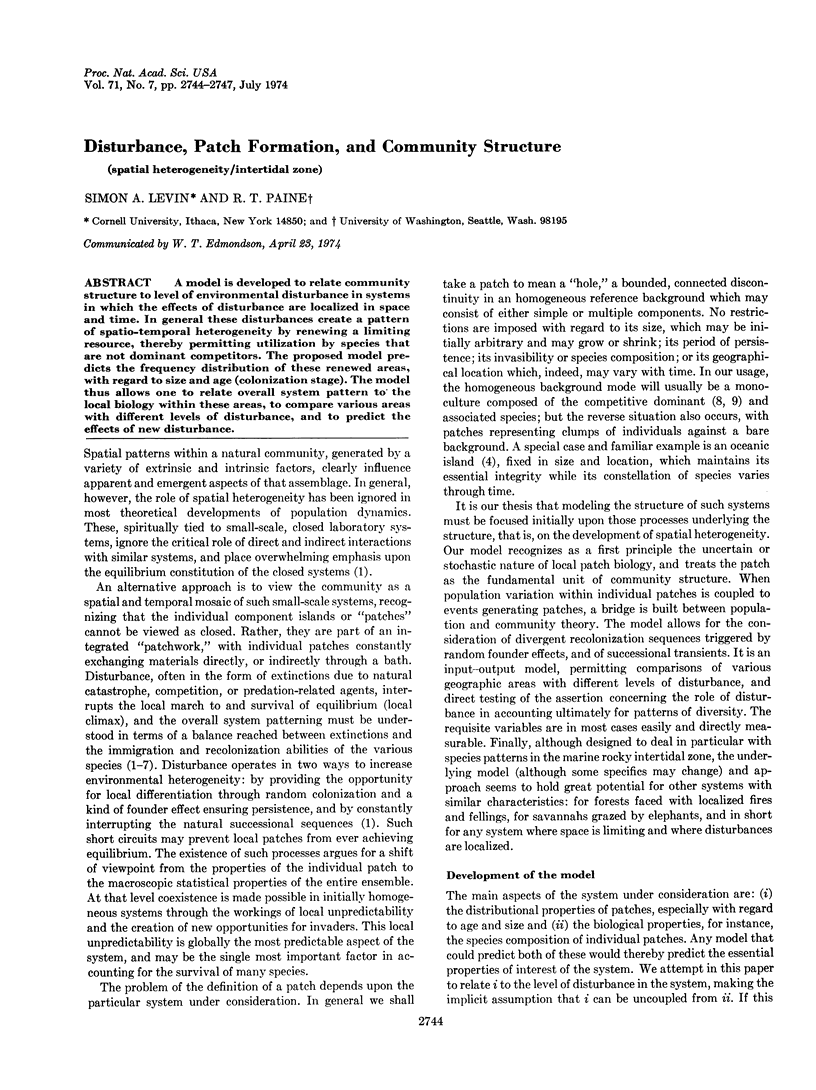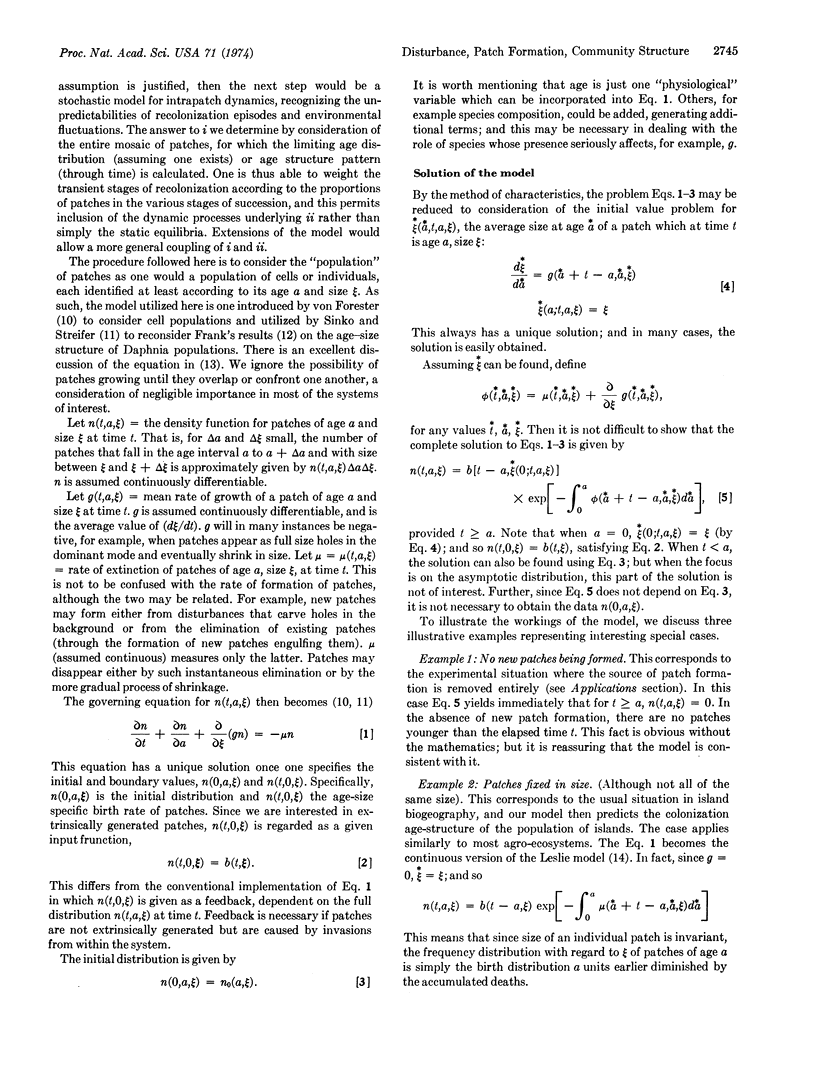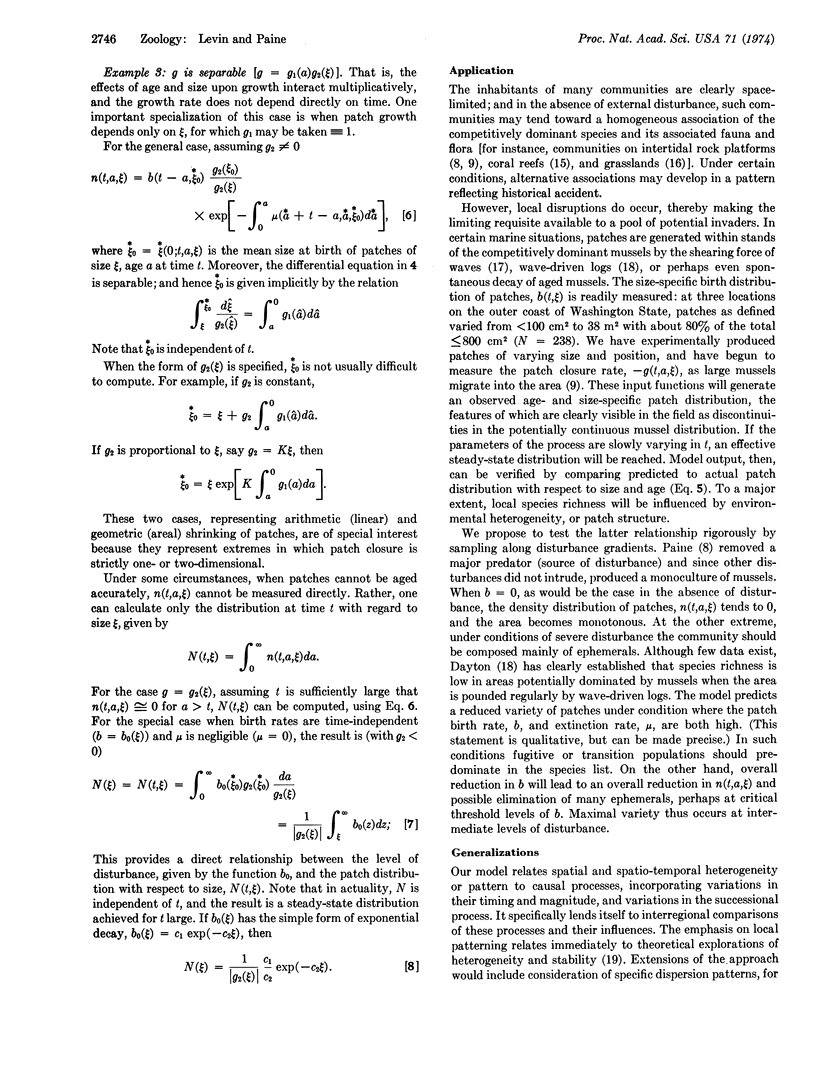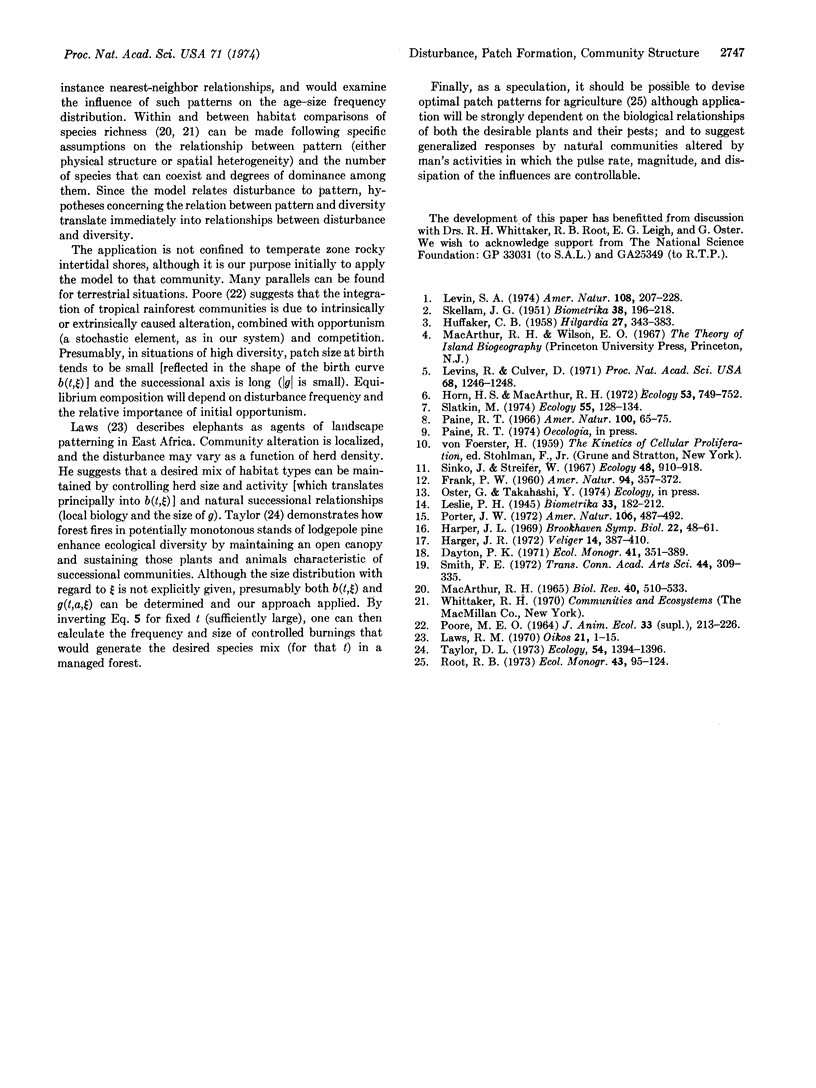Abstract
A model is developed to relate community structure to level of environmental disturbance in systems in which the effects of disturbance are localized in space and time. In general these disturbances create a pattern of spatio-temporal heterogeneity by renewing a limiting resource, thereby permitting utilization by species that are not dominant competitors. The proposed model predicts the frequency distribution of these renewed areas, with regard to size and age (colonization stage). The model thus allows one to relate overall system pattern to the local biology within these areas, to compare various areas with different levels of disturbance, and to predict the effects of new disturbance.
Keywords: spatial heterogeneity, intertidal zone
Full text
PDF



Selected References
These references are in PubMed. This may not be the complete list of references from this article.
- Harper J. L. The role of predation in vegetational diversity. Brookhaven Symp Biol. 1969;22:48–62. [PubMed] [Google Scholar]
- Levins R., Culver D. Regional Coexistence of Species and Competition between Rare Species. Proc Natl Acad Sci U S A. 1971 Jun;68(6):1246–1248. doi: 10.1073/pnas.68.6.1246. [DOI] [PMC free article] [PubMed] [Google Scholar]
- SKELLAM J. G. Random dispersal in theoretical populations. Biometrika. 1951 Jun;38(1-2):196–218. [PubMed] [Google Scholar]


